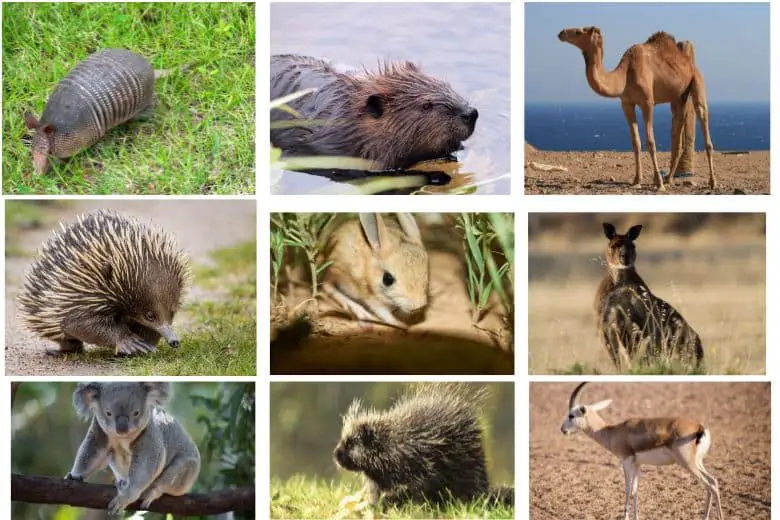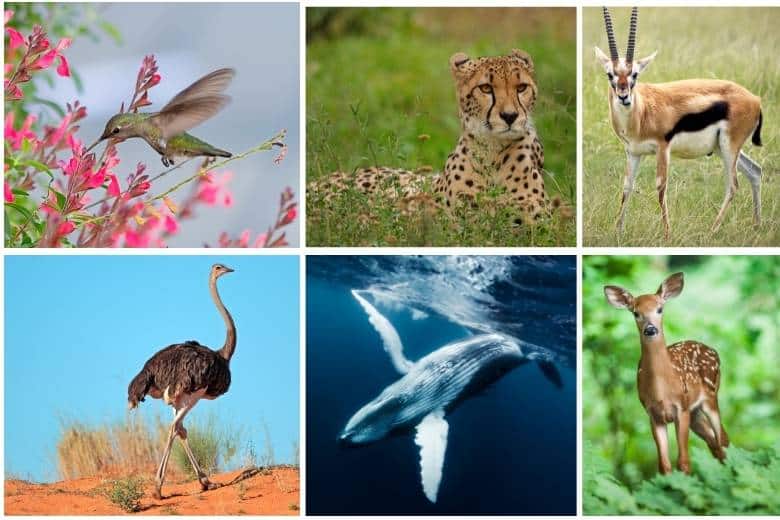Eagles are iconic birds of prey known for their keen eyesight, powerful talons, and impressive hunting abilities. They are apex predators, meaning that they are at the top of the food chain and have few natural predators. However, despite their strength and agility, eagles are not invincible and can fall victim to a variety of predators.
In this article, we’ll explore some of the predators that prey on eagles and how they hunt. We’ll also discuss some strategies for protecting eagles and their habitats from these threats.
Types of predators
Mammals
Mammals are some of the most common predators of eagles. The following are examples of mammals that hunt eagles:
- Bobcats – These predators are stealthy and can climb trees to reach their prey.
- Coyotes – Coyotes are opportunistic predators that will attack any prey they can catch.
- Wolves – Wolves hunt in packs and are known to take down larger prey, including eagles.
- Bears – Bears are omnivores and will eat anything, including eagles.
Reptiles
Reptiles are another type of predator that eats eagles. The following are examples of reptiles that hunt eagles:
- Snakes – Some species of snakes are known to climb trees to reach their prey, including eagles.
- Lizards – Lizards are opportunistic predators that will eat any prey they can catch.
Birds
Birds are also known to hunt other birds, including eagles. The following are examples of birds that hunt eagles:
- Owls – These nocturnal birds are silent in flight and can swoop down on their prey without being detected.
- Hawks – Hawks are known for their sharp talons and powerful wings that help them catch their prey.
- Falcons – Falcons are incredibly fast and can catch their prey in mid-flight.
- Eagles – Eagles are known to prey on other eagles, especially during territorial disputes.
Diet of predators
Mammals
The diet of mammalian predators of eagles varies depending on the species. Here are some examples:
-
Bobcats – Bobcats are carnivores that primarily feed on small mammals like rabbits and rodents. However, they can also prey on larger animals like deer and eagles.
-
Coyotes – Coyotes are opportunistic predators that will eat anything they can catch, including small mammals, birds, and even carrion.
-
Wolves – Wolves hunt in packs and can take down larger prey, including deer and elk. However, they can also prey on smaller animals like rabbits and eagles.
-
Bears – Bears are omnivores and will eat anything they can find, including plants, insects, and carrion. They can also prey on larger animals like deer and eagles.
Reptiles
The diet of reptilian predators of eagles is primarily composed of smaller prey, including rodents and other small mammals.
-
Snakes – Some species of snakes are known to prey on birds, including eagles. Their diet may also include small mammals like rodents.
-
Lizards – Lizards are opportunistic predators that will eat anything they can catch, including insects, small mammals, and birds.
Birds
Birds of prey like eagles primarily feed on other birds, small mammals, and fish. Here are some examples of the diet of avian predators of eagles:
-
Owls – Owls primarily feed on rodents and other small mammals. However, larger species of owls like the great horned owl can also prey on other birds, including eagles.
-
Hawks – Hawks primarily feed on small mammals and birds. However, larger species of hawks like the goshawk and the red-tailed hawk can also prey on larger birds like eagles.
-
Falcons – Falcons primarily feed on other birds, including smaller species of birds like songbirds and larger birds like pigeons and ducks. They are incredibly fast and can catch their prey in mid-flight.
-
Eagles – Eagles are opportunistic predators that will eat anything they can catch, including fish, mammals, and other birds. However, they are known to prey on other eagles, especially during territorial disputes.
Hunting techniques
The hunting techniques of predators of eagles vary depending on the species. Here are some examples:
Mammals
-
Bobcats – Bobcats are stealthy hunters that use their agility and sharp claws to catch their prey. They can climb trees to reach their prey, including eagles.
-
Coyotes – Coyotes are opportunistic hunters that will chase their prey and try to catch it with their sharp teeth.
-
Wolves – Wolves hunt in packs and use their strength and teamwork to take down larger prey, including eagles.
-
Bears – Bears are powerful animals that can catch their prey with their sharp claws and teeth.
Reptiles
-
Snakes – Some species of snakes are known to climb trees to reach their prey, including eagles. They use their powerful coils to constrict their prey and kill it.
-
Lizards – Lizards are opportunistic hunters that will use their sharp teeth to catch their prey.
Birds
-
Owls – Owls are silent in flight and can swoop down on their prey without being detected. They use their sharp talons to catch their prey.
-
Hawks – Hawks use their powerful wings and sharp talons to catch their prey. They can chase their prey and catch it in mid-air.
-
Falcons – Falcons are incredibly fast and can catch their prey in mid-flight. They use their sharp talons to catch their prey.
-
Eagles – Eagles are powerful birds of prey that can catch their prey with their sharp talons and beak. They can chase their prey and catch it in mid-air.
FAQs
- Do eagles have any natural defenses against predators?
Eagles have strong talons and beaks that they can use to defend themselves against predators. They can also fly away quickly to escape danger.
- Are eagles more vulnerable to certain types of predators?
Eagles are most vulnerable when they are nesting or roosting. During these times, they may be less aware of their surroundings and more focused on caring for their young.
- Are humans a threat to eagles?
Humans can be a threat to eagles through habitat destruction, pollution, and other activities that disrupt their natural habitat. Additionally, some humans may hunt eagles illegally.
- Can eagles hunt and kill their own predators?
While eagles are powerful birds of prey, they generally do not hunt and kill their own predators. Instead, they rely on their natural defenses and quick escape tactics to avoid danger.
- Are eagles endangered because of their natural predators?
While natural predators do pose a threat to eagles, habitat loss and human activities are the primary threats to their survival. Conservation efforts are important to protect eagles and their habitats from these threats.
Conclusion
Eagles may be majestic and powerful birds of prey, but they are not invincible. They face threats from a variety of predators, including mammals, reptiles, and other birds. These predators have different hunting techniques and diets, but they all pose a danger to eagles.
To protect eagles and other birds of prey, it’s important to understand their natural predators and how they hunt. This knowledge can help conservationists and wildlife managers develop strategies to protect eagles and their habitats.
If you are lucky enough to spot an eagle in the wild, it’s important to keep your distance and observe from a safe distance. Do not disturb their habitat or interfere with their natural behavior.



